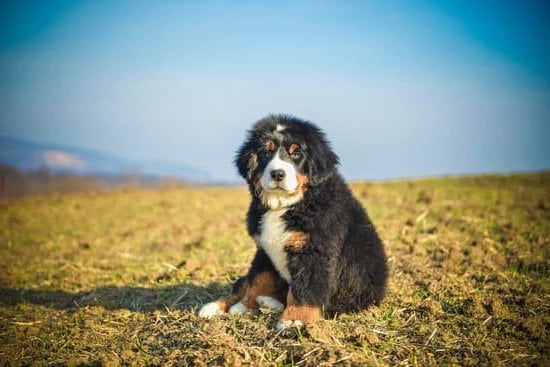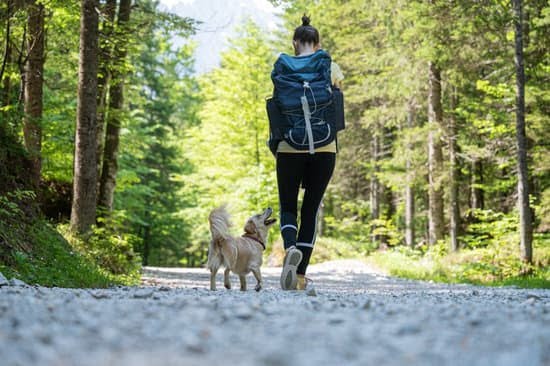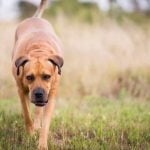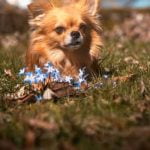Are you interested in learning how to train a bear dog? Bear dogs, also known as hounds, play a crucial role in bear hunting and wildlife management. Understanding the purpose and attributes of bear dogs is essential for successful training and effective partnership in the field.
Bear dogs are specially bred and trained to assist hunters in tracking and treeing bears. They possess keen senses of smell and hearing, as well as the athleticism and endurance necessary to navigate challenging terrains. In this introductory section, we will explore the unique qualities of bear dogs and their role in hunting and conservation efforts.
As you delve into the world of training a bear dog, it is important to first understand the different breeds suitable for bear hunting. Each breed of bear dog has its own set of characteristics that make them ideal for tracking and treed big game.
Additionally, preparing for training requires specific equipment and resources to ensure the safety and success of both the handler and the bear dog. Let’s explore these aspects further as we embark on this journey of training a bear dog.
Bear Dog Breeds
When it comes to bear hunting, having the right breed of dog by your side is crucial. Not all dogs are suited for the task of tracking and facing off against bears. It’s essential to choose a breed that’s not only physically capable but also possesses the right temperament and instincts for bear hunting.
Below are some of the best breeds for bear hunting:
1. Karelian Bear Dog: This hardy and independent breed originates from Finland and has been specifically bred for hunting large game, including bears. Known for their fearlessness and determination, Karelian Bear Dogs are natural hunters with a strong prey drive.
2. Black Russian Terrier: This powerful and protective breed was originally developed in Russia for military purposes, but they also excel in bear hunting. With their combination of strength, courage, and loyalty, these dogs make excellent companions for bear hunting expeditions.
3. American Black & Tan Coonhound: Known for their exceptional tracking abilities, coonhounds are versatile hunters that can easily adapt to various terrains. Their keen sense of smell and endurance make them well-suited for tracking bears over long distances.
4. Norwegian Elkhound: Bred to hunt elk, this sturdy and resilient breed has also been used for hunting bears due to their ability to track large game tirelessly. Their intelligence and loyalty make them an asset in bear country.
By choosing a bear dog breed that aligns with the specific requirements of bear hunting, you set the stage for a successful partnership with your canine companion as you work together in challenging environments to pursue big game.
Remember that training a bear dog requires patience, consistency and positive reinforcement techniques tailored specifically to each breed’s characteristics. Be sure to research each breed thoroughly before selecting one as your go-to partner in bear country.
Preparing for Training
Understanding the Essential Equipment
Before starting the training process, it is crucial to gather all the necessary equipment for effective bear dog training. One of the most important pieces of equipment is a sturdy and comfortable harness specifically designed for bear dogs. This will allow you to have better control over your dog during the training sessions and when out in the field. Additionally, a long lead or leash will be essential for practicing recall commands and general obedience training.
Utilizing Training Aids
In addition to physical equipment, utilizing training aids can greatly benefit the bear dog training process. For scent identification and tracking training, consider using scented articles or items with artificial bear scents to familiarize your dog with the smell they will encounter during bear hunting. Treats and clickers can also be used as positive reinforcement tools during basic obedience and advanced training exercises.
Accessing Educational Resources
To ensure successful bear dog training, it is important to have access to educational resources such as books, online articles, or professional trainers who specialize in bear dog handling. These resources can provide valuable information on various techniques for teaching commands, establishing a strong bond with your bear dog, and implementing safety measures during hunting expeditions.
By understanding the essential equipment needed, utilizing effective training aids, and accessing educational resources, you’ll be better prepared to start the journey of how to train a bear dog successfully.
Establishing Trust and Bonding
Bear dogs are a special type of hunting dog that are trained to track, chase, and tree bears. However, in order to effectively train a bear dog, it is crucial to establish a strong bond and trust between the handler and the dog. This bond not only ensures better communication and control but also enhances the overall training experience.
To build trust and bonding with your bear dog, it is important to spend quality time together. Engage in activities such as playtime, walks, and grooming sessions to create a positive association with each other. Positive reinforcement such as treats, praise, and affection will also help in strengthening the bond with your bear dog.
Another key aspect of building a strong relationship with your bear dog is consistent training and clear communication. Using consistent commands and cues will help your bear dog understand what is expected of them. Consistency in training methods will also prevent confusion and frustration for both the handler and the dog.
It is important to note that building trust and bonding with your bear dog is an ongoing process. It requires patience, dedication, and understanding of your bear dog’s individual needs and behavior. By investing time and effort into establishing a strong relationship with your bear dog, you will create a solid foundation for successful training in the future.
| Trust-Building Activities | Importance |
|---|---|
| Playtime, walks, grooming sessions | Creates a positive association |
| Positive reinforcement (treats, praise) | Strengthens the bond |
| Consistent training methods | Avoids confusion and frustration |
Basic Training Commands
Training your bear dog to understand and obey essential commands is crucial for their control and safety in bear hunting scenarios. By teaching your bear dog basic training commands, you can ensure that they listen to and follow your directions, ultimately keeping both them and you safe during hunts.
Command: “Sit”
One of the most fundamental commands for a bear dog is “sit.” Teaching your dog to sit on command can help you maintain control over them in various situations. Whether it’s when encountering a bear or simply during everyday activities, the ability to command your dog to sit can help prevent potential conflicts or accidents.
Command: “Stay”
Another important command to teach your bear dog is “stay.” This command is particularly useful in situations where you need your dog to remain in one place for their safety and yours. For example, if you come across a bear during a hunt, being able to command your dog to stay still can prevent them from provoking the bear or putting themselves in harm’s way.
Command: “Come”
The “come” command is essential for ensuring that your bear dog returns to you when called. This can be crucial during hunt scenarios, as it allows you to call back your dog if they start chasing after a bear or wandering off on their own. Teaching this command effectively can make a significant difference in maintaining control over your bear dog during hunting expeditions.
By mastering these basic training commands, you can significantly enhance the safety and effectiveness of your bear dog in various hunting situations. Through consistent practice and positive reinforcement, you can effectively train your bear dog to understand and obey these essential commands, ultimately strengthening the bond between you and your canine hunting companion.
Advanced Training Techniques
To train a bear dog for advanced tracking and scent identification, it is important to understand the innate abilities of the specific breed you are working with. Bear dogs have a natural instinct for tracking and recognizing scents, making them valuable assets in hunting and wildlife management. The training process involves honing these natural abilities through consistent practice and positive reinforcement.
The first step in mastering tracking and scent identification is to introduce your bear dog to various scents in controlled environments. This can be done by using scent training kits that contain different scents such as deer, elk, and bear. By familiarizing your dog with these scents, they will learn to differentiate between them and identify the target scent when out in the field.
Once your bear dog has become familiar with different scents, you can begin training them to track specific targets. This can be done by setting up simulated tracking scenarios in different terrains such as forests, mountains, or fields. By consistently practicing tracking exercises, your bear dog will sharpen their skills and become more proficient at locating specific scents over challenging terrain.
It is crucial to be patient and consistent during the advanced training process. Using positive reinforcement techniques such as treats or verbal praise will encourage your bear dog to continue improving their tracking and scent identification abilities. With dedication and proper training, your bear dog can become a highly skilled tracker and an invaluable partner in outdoor activities such as hunting or wildlife conservation efforts.
Training a bear dog on how to train a bear dog doesn’t happen overnight; it requires time, effort, and commitment from both the owner/handler and the canine companion.
Real-Life Training Scenarios
Training your bear dog to respond effectively in real-life encounters with bears is crucial for their safety as well as yours. Simulating bear encounters and response training can help prepare your dog for the unpredictable situations they may face during bear hunting or wildlife management. Here are some essential scenarios and techniques to consider when training your bear dog:
- Mock Bear Encounters: One effective way to train your bear dog is to simulate encounters with a mock bear, using props or other dogs dressed in bear-scented materials. This helps the dog recognize the scent and behavior of a bear, preparing them for actual encounters in the wild.
- Response Training: Teach your bear dog appropriate responses to encountering a bear, such as staying by your side, alerting you to the presence of a bear, or following specific commands to avoid confrontation. Use positive reinforcement and consistency to reinforce these responses.
- Distraction Techniques: Practice training your bear dog in various distracting environments, simulating the sights and sounds they may encounter during a real hunt. This can help desensitize them to potential distractions and keep their focus on the task at hand.
Properly simulating real-life scenarios can greatly improve your bear dog’s ability to respond effectively and safely when faced with bears or other wildlife. By incorporating these training techniques into your routine, you can ensure that your bear dog is equipped with the skills and confidence needed for successful hunts while minimizing risks for both your dog and surrounding wildlife.
Remember that patience, consistency, and positive reinforcement are key components in how to train a bear dog for real-life encounters. With dedication and proper training techniques, you can prepare your bear dog for any situation they may encounter in their role as a valuable asset in bear hunting or wildlife management efforts.
Safety Measures and Responsible Bear Dog Ownership
In conclusion, training a bear dog requires dedication, patience, and a deep understanding of the unique responsibilities that come with owning such a specialized animal. By following the necessary steps outlined in this article, you can ensure that your bear dog is well-prepared for the challenges of hunting and tracking bears while also ensuring the safety and well-being of both your dog and the wildlife it interacts with.
One key aspect of training a bear dog is establishing trust and bonding with your canine companion. This not only creates a strong foundation for effective training but also reinforces the importance of responsible ownership and humane treatment of animals. Additionally, basic and advanced training techniques such as teaching essential commands, tracking, and scent identification are crucial for both the success of bear hunting missions and the safety of your bear dog in various real-life scenarios.
Moreover, it is essential to emphasize safety measures and responsible ownership practices in bear dog training. This includes proper equipment, ethical hunting practices, and a commitment to protecting wildlife populations. By upholding these principles, you not only contribute to the preservation of natural habitats but also demonstrate how to train a bear dog in a way that promotes respect for nature and animal welfare.
Frequently Asked Questions
Are Bear Dogs Friendly?
Bear dogs can be friendly, but their temperament and behavior largely depend on their training, socialization, and breeding. Some bear dogs are more inclined to be sociable and affectionate towards humans, while others may have a more reserved or protective nature.
What Makes a Good Bear Dog?
A good bear dog possesses traits such as courage, intelligence, loyalty, and a strong prey drive. These dogs need to be confident and assertive without being aggressive. They should also have excellent tracking abilities, keen senses, and physical endurance to handle the demands of bear hunting.
What Dogs Are Trained for Bears?
Various breeds are trained for bear hunting including Plott Hounds, Black and Tan Coonhounds, Karelian Bear Dogs, and specific breeds of scent hounds like Blue Tick Coonhounds and Treeing Walker Coonhounds. These breeds are selected for their tracking skills, physical stamina, bravery, and ability to work in harsh terrain.
Each breed brings its unique strengths when it comes to tracking or treeing bears.

Welcome to the blog! I am a professional dog trainer and have been working with dogs for many years. In this blog, I will be discussing various topics related to dog training, including tips, tricks, and advice. I hope you find this information helpful and informative. Thanks for reading!





